WATERVILLE — A $1.6 million solar project that is underway at the Kennebec Sanitary Treatment District soon will bring energy and budget savings to the district’s member towns. It is on track to go live by Jan. 1.
The sanitary treatment district directly serves Waterville, Winslow, Fairfield and Benton, removing solid waste from those municipalities’ waste water and safely disposing of it. By extension, the facility also serves towns such as Oakland, whose sewage systems feed into those of the partnered municipalities. Vassalboro has been looking to connect to Winslow’s sewer district since 2015 but has had difficulty funding the move. The Kennebec Sanitary Treatment District is the third-largest operation of its type in the state, behind similar ones in Lewiston-Auburn and Portland. KSTD Superintendent Tim LeVasseur estimated that up to 35,000 people are connected to the Kennebec system.
After the array’s 2,808 panels are installed on-site, it will generate enough energy to cover about 84 percent of the district’s annual electric expenses, according to Holly Noyes, marketing and public relations manager for ReVision Energy. Noyes said that will amount to about 1.22 million kilowatt hours, or $2,000 of savings in the first year. ReVision Energy coordinated and is overseeing the project.
The panels are being funded through a power purchase agreement. In that type of contract, an investor finances the project on a host’s land. The host buys solar power from the investor at a fixed rate. After a certain number of years — in this case, a minimum of six — the host can opt to purchase the entire renewable energy system at a discounted price.
“What happens is the investor takes advantage of all of the tax incentives ’til they’re exhausted, and then the value is decreased substantially for them, so they sell the asset to the host; and that’s part of the value proposition for the host as well,” said Zach Good, a project manager from ReVision.
Noyes said the company could not disclose the financier of this project, but noted that it is a “social impact investor.”
The relationship creates long-term savings for the hosts.
“In 15 years, if (Kennebec Sanitary Treatment District) decides to buy this, the cost is going to be pretty expensive,” LeVasseur said.
The Kennebec Sanitary Treatment District expects to pay around $600,000 to 700,000 in order to acquire the panels.
“$600,000 to 700,000 (is) a lot of money, but if that contract continues to produce for the next 40 years, we could add another $1.5 (million) to $2 million of savings to the future, and we think CMP (rates) may go up,” LeVasseur added.
Forty years is the expected lifespan of the solar panels, according to Noyes.
Adding solar panels affects local ratepayers as well. If the panels produce more energy than the sanitary treatment facility can use, the excess goes into the state’s electric grid.
“What’s cool about this is there’s a chance that some of the electrons leaving here could go to the local businesses right here,” said LeVasseur. “(Central Maine Power Co.) is like a battery in a sense. The excess goes in and local community people will be using it. I think that’s a great concept.”
Noyes said that particularly in the summer, when people use more electricity to power air conditioners, electricity providers have to buy energy from out of state. She noted that this can cost up to 80 cents per kilowatt hour, while solar panels “provide value to the grid at 33 cents a kilowatt hour.
“This is going to help feed the grid, and this is a large project that is going to help equalize the demand for power that’s in Maine,” said Noyes. “The more projects we see going up like this that we’re doing, the more that we’re going to stabilize the grid on those hot, sunny days.”
Noyes declined to provide an estimate on the overall savings for ratepayers, but said that “generally speaking, (solar projects) should lower the price over time.”
She added that she thinks the energy efficiency the project provides is as important as its financial benefits.
“These larger solar arrays throughout Maine are putting power on the grid from localized sources, and it’s clean, renewable energy, not coming from burning coal or firing up power plants,” Noyes said. “This is the cleanest way that you can produce power, and I think that is what we should all really be focused on.”
According to Noyes, the project will generate 968.76 kilowatts and offset 1,251,000 pounds of carbon dioxide emissions each year.
Construction of the project at the Kennebec Sanitary Treatment District began Oct. 8. The plant was identified as one of the most energy-consuming facilities in the area with space for a solar farm and the means to accommodate it. The KSTD board directed LeVasseur to pursue the project in 2015.
The sanitary treatment district was established in 1971. It is located at 401 Water St. In 2017, KSTD treated 2.5 billion gallons of waste water, removing 4 million pounds of solid waste, according to Noyes.
ReVision Energy, which is based in Maine, has worked on over 8,000 solar projects throughout New England. On Monday, it completed an array at a Portland landfill. That project faced setbacks because of delayed soil testing and leaks and damage to the landfill’s cap. In two weeks, Good said the company will begin installing solar panels on land owned by Bangor Savings Bank at its headquarters in Bangor.
Several local businesses have been involved with the installation of solar panels, including Comprehensive Land Technologies of South China, Clinton’s Wiswell Electric, Westbrook’s Burns’ Fencing, Cumberland’s Sevee & Maher Engineers as well as Waterville’s Fanado Pelotte and Carey Land Surveys.
Meg Robbins — 861-9239
Send questions/comments to the editors.

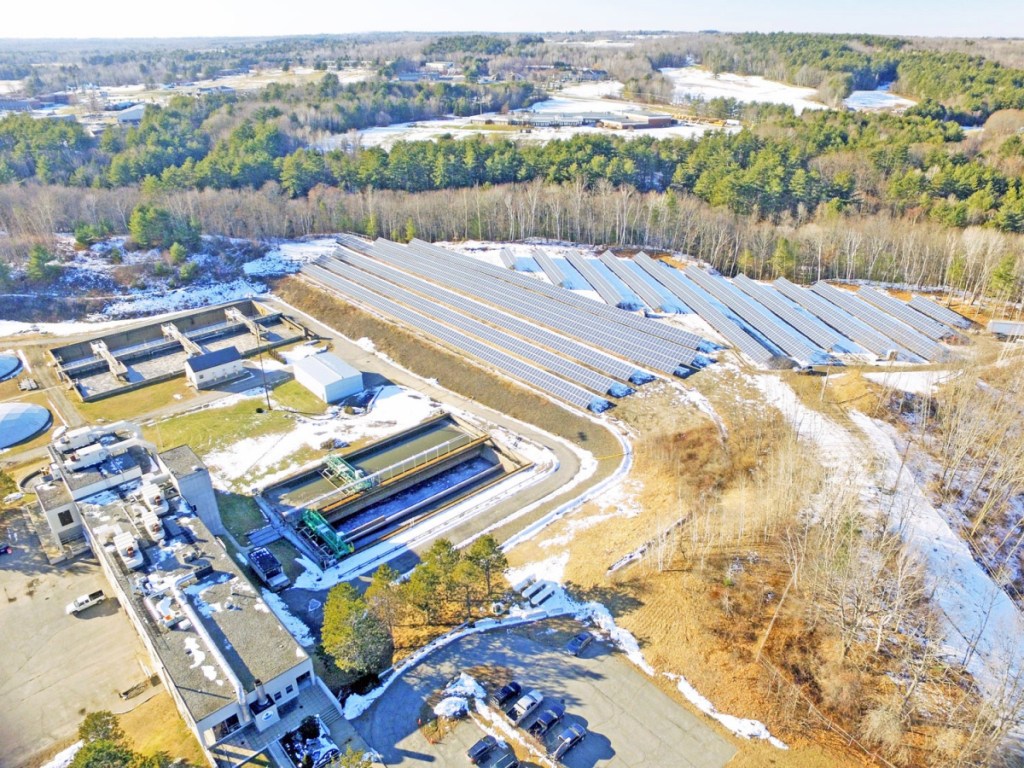
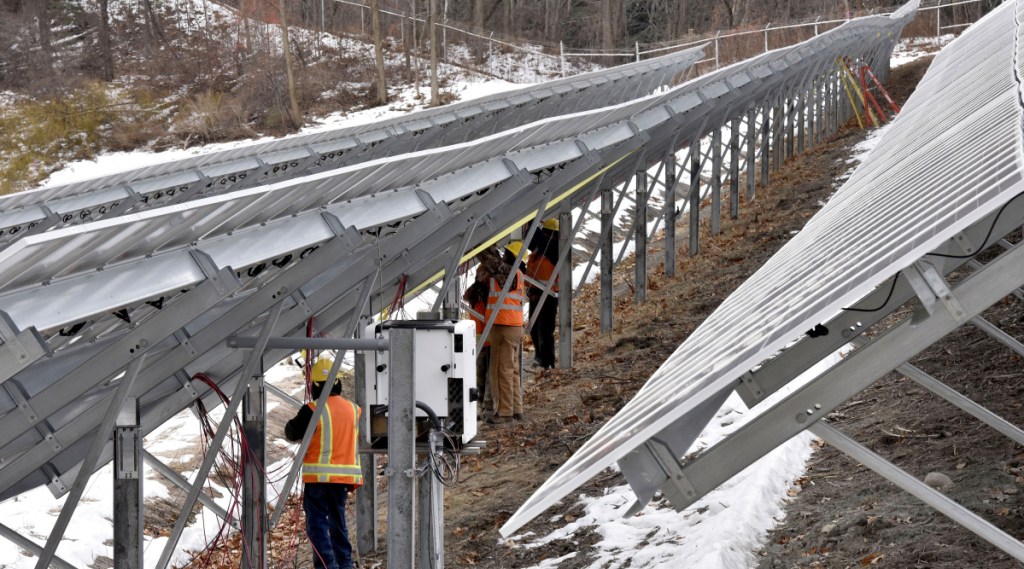
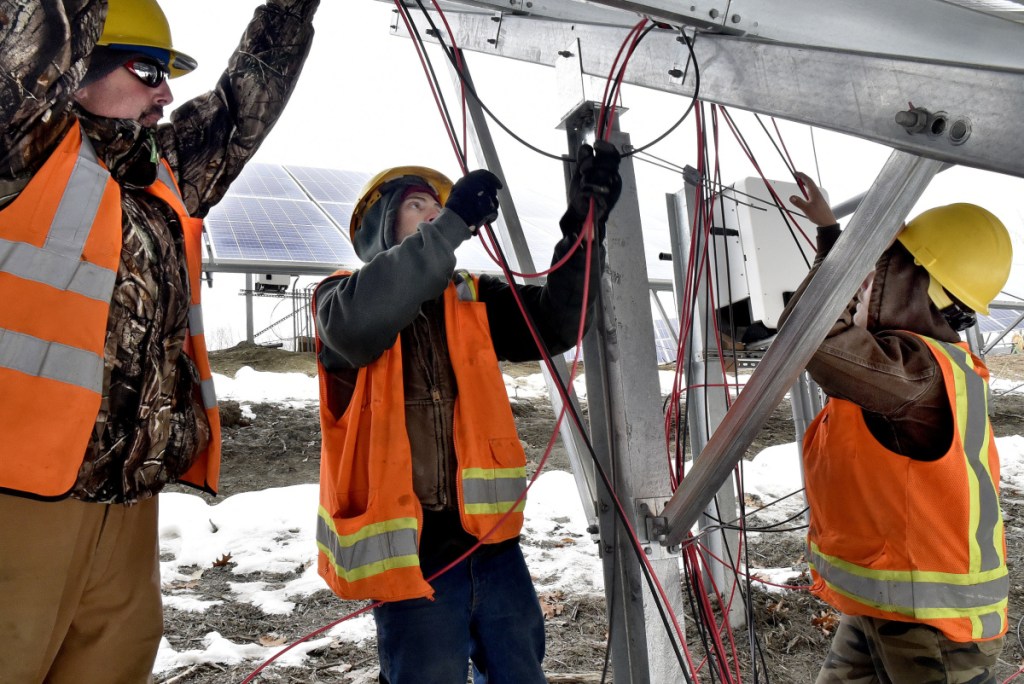
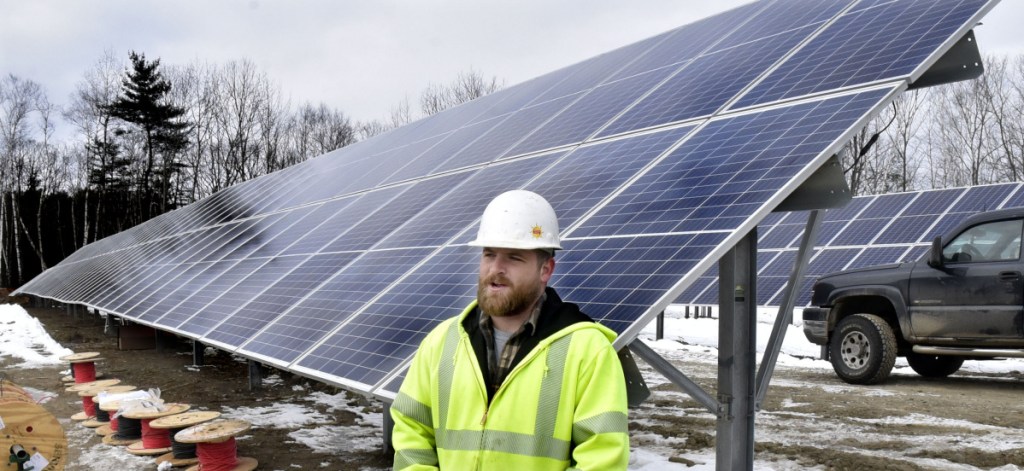
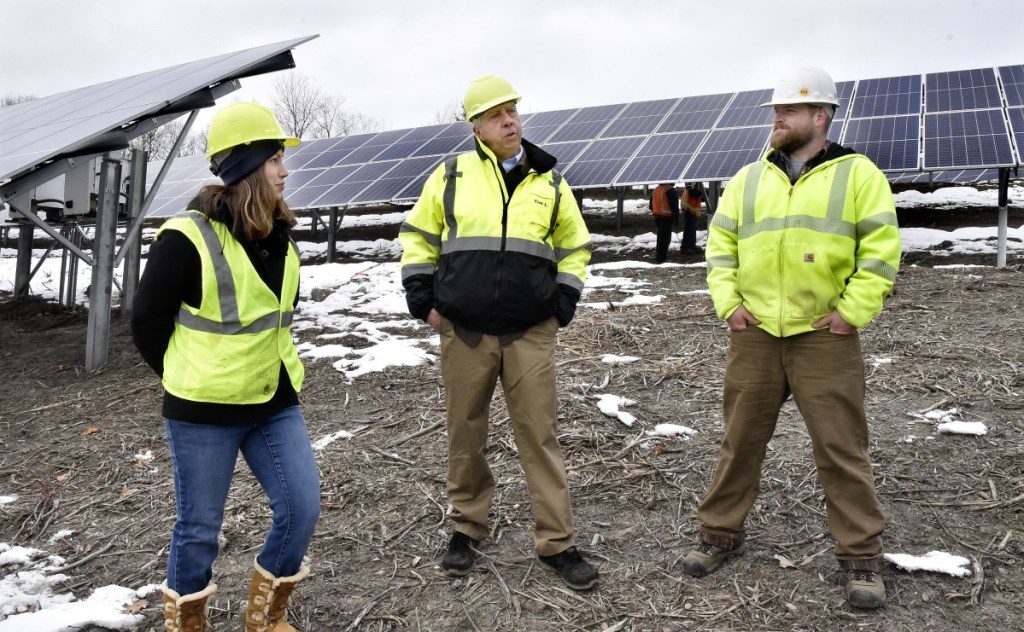
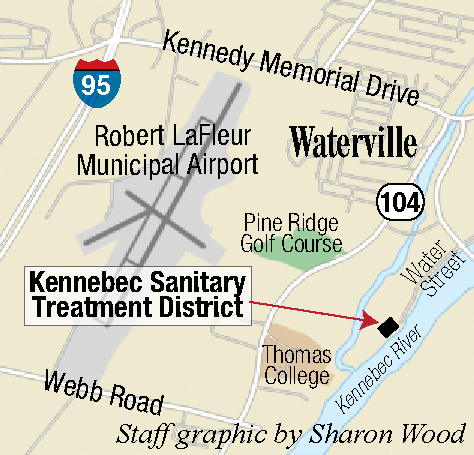

Comments are no longer available on this story